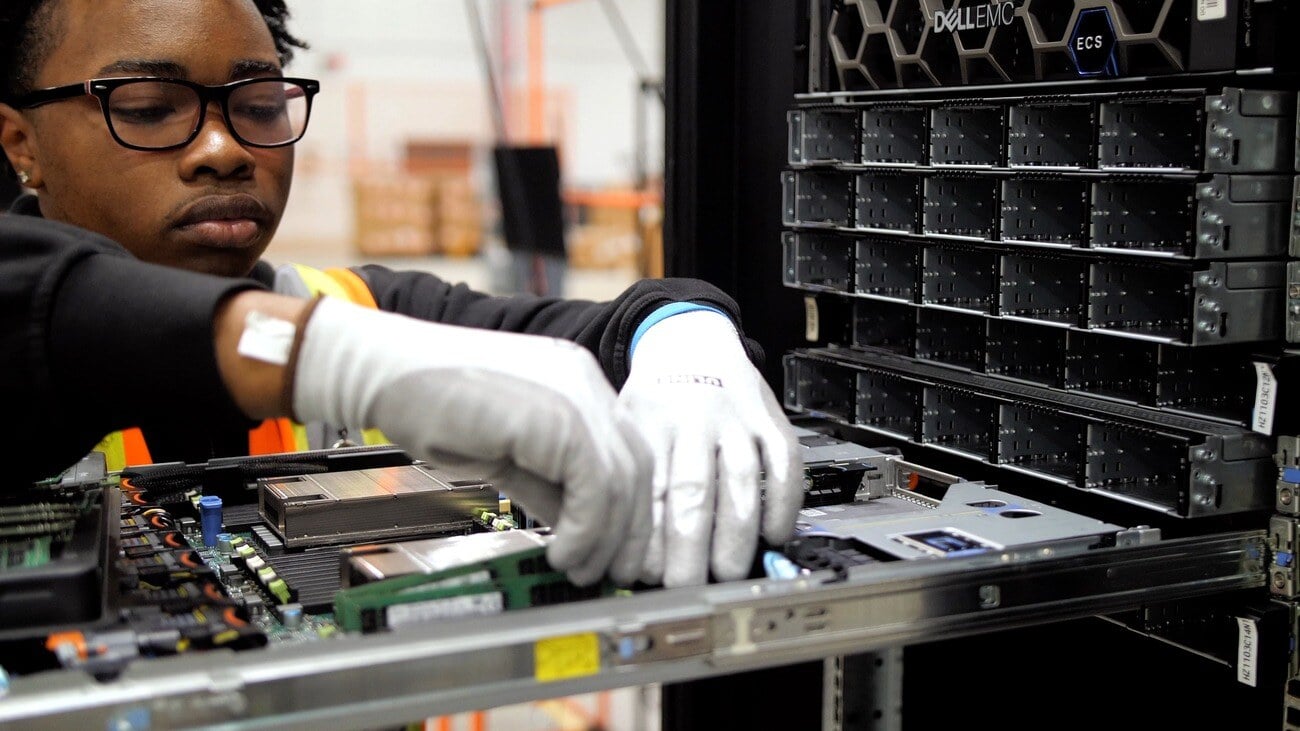As we look ahead to 2025, the landscape of technology and sustainability seems poised for substantial transformation. These changes are driven by evolving regulations, advancements in technology, and a global push towards sustainable practices.
In this blog post, we will explore seven anticipated trends that will impact IT Asset Disposition (ITAD), e-waste recycling, and battery recycling, including the impacts of the e-waste amendment to the Basel Convention, new data destruction guidelines, and sustainability goals. Additionally, we will consider the influence of tariffs, AI governance, and climate commitments.
Contents
1. The Impact of the E-waste Amendment to the Basel Convention
2. Advancements in Data Destruction: IEEE 2883-2022
3. Sustainability Goals: Net Zero and Beyond
4. Closing the Loop: The Future of Battery Recycling
5. Global Trade: The Influence of Tariffs
6. AI Revolution: Introducing Governance Frameworks
7. ESG Disclosure: Regulations and Reporting
The Impact of the E-waste Amendment to the Basel Convention
The Basel Convention's E-waste Amendments, derived from the Swiss-Ghana proposal, have introduced significant changes to the management and movement of Waste Electrical and Electronic Equipment (WEEE). Effective from 2025, this amendment aims to enhance the global regulation of electronic waste, especially in developing countries. Stricter controls on the transboundary movement of e-waste will encourage countries to develop local recycling and disposal infrastructures.
For the ITAD industry, this means a growing emphasis on in-country processing of e-waste, pushing companies to invest in better recycling facilities and technologies. As international organizations consolidate ITAD services with single or dual global vendors they will look for ITAD companies with significant global footprint, able to provide standardized services at owned and operated facilities.
Advancements in Data Destruction: IEEE 2883-2022
With the rapid evolution of storage technologies and SATA, SCSI, and NVMe drives growing in popularity, data destruction guidelines are becoming more sophisticated. A significant leap from the NIST 800-88 Data Destruction Standard developed in 2006 and last updated in 2021, the implementation of IEEE 2883-2022 marks a significant step forward in ensuring secure data erasure from modern storage devices. This standard provides comprehensive guidelines for data destruction, addressing the unique challenges posed by new storage technologies.
Data storage demand is predicted to surge in 2025, fuelled in part by the emergence of quantum computing. The UN has declared 2025 as the International Year of Quantum Science and Technology, with real world use cases for quantum including drug discovery and climate modelling. This advanced technological field is set to transform data processing and significantly influence the demand for data storage and data centers as it generates and processes vast amounts of data.
Data center users and operators will need to find ITAD companies that adhere to these updated guidelines to maintain data security and compliance. The emphasis on secure data destruction is expected to drive innovations in data wiping technologies, ensuring that sensitive information does not fall into the wrong hands during the disposal process.
Read more about the reuse opportunities that IEEE 2883:2022 opens up in Eric Ingebretsen's recent article '150 Million Opportunities to Transform Technology Into Emissions Savings', featured in the Reverse Logistics Association Magazine.
Sustainability Goals: Net Zero and Beyond
As the world grapples with climate change, sustainability goals have become a central focus for many industries. The year 2024 was the hottest on record, with increased frequency of wildfires and other extreme weather events. The upcoming COP30 in Brazil will be pivotal for securing strong climate commitments, with countries expected to announce new greenhouse gas emission reduction targets, in the interests of achieving the Paris Agreement’s 1.5ºC target.
Many companies have targets for the end of 2025 to make significant strides towards achieving net zero emissions. This involves reducing Scope 1, 2, and 3 emissions, which include direct emissions, indirect emissions from purchased electricity, and all other indirect emissions in a company’s value chain, respectively.
In addition to these traditional scopes, Scope 4 emissions, or avoided emissions, are gaining attention. This concept involves reducing emissions elsewhere in the supply chain through activities such as recycling IT equipment and batteries. For companies planning IT or data center refreshes or upgrades, ITAD presents an opportunity to contribute to GHG emissions reductions and achieve their sustainability targets by recovering valuable materials and reducing overall environmental impact.
To find out more about transforming your IT equipment into emissions savings download our free guide: Reducing Emissions Through ITAD | Environmental Benefits Guide
Global Trade: The Influence of Tariffs
As a new administration takes over in the United States in 2025, the world’s largest economy is preparing for the proposed implementation of broad new tariffs on countries including Mexico, Canada and China. These plans could potentially increase the prices US companies pay for goods largely imported from these countries, which includes electric vehicle batteries and steel required by data centers.
Companies will consider proactively adapting their supply chains to manage the impact of changes to tariffs and will look to the ITAD and recycling industry for opportunities to keep resources in-country and reintroduce equipment, components and commodity materials back into their supply chains.
Where no manufacturing of equipment is currently available within the US we might see companies pushing through earlier orders before revised tariffs are implemented – bringing forward purchases, early indications show that this may be the case for hyperscale data centers.
Closing The Loop: The Future of Battery Recycling
The rise of electric vehicles (EVs) has brought battery recycling to the forefront of sustainability efforts. To meet rising demand for electric vehicles, battery manufacturers are expected to ramp up production significantly throughout 2025. Automotive companies are increasingly focused on closing the loop on battery production, securing their supply chains and reducing risk.
Recovering valuable commodities from used batteries presents an opportunity for electric vehicle manufacturers to reintroduce materials back into the manufacturing process. This closed-loop approach not only reduces dependency on raw material extraction but also minimizes the environmental footprint of battery production.
Throughout 2025, advances in battery recycling technologies and increased collaboration between manufacturers and recyclers are expected to drive significant improvements in the recovery and reuse of battery materials. As the industry grows, there will be a stronger focus on recycling and sustainable practices to minimize environmental impact. Innovations in battery recycling will become increasingly important.
AI Revolution: Global Governance Takes Shape
In 2025 the European’s Union’s AI Act will come into force. The first comprehensive legal framework for AI (Artificial Intelligence) use, it will begin to establish structures for the management and use of AI technologies. Following in the footsteps of previous landmark regulatory frameworks including the WEEE (Waste Electrical and Electronic Equipment) Directive and the GDPR (General Data Protection Regulation), it is likely that other countries and regions will adopt similar legislation throughout the coming years.
The new Act aims to ensure ethical use of AI and safeguard against harm, outlawing AI systems deemed to be inherently harmful, but also providing for broader enforcement provisions requiring closer oversight of AI applications. Although the most significant impact will lie with AI developer, organizations deploying AI models may also expect increased compliance costs as legislators seek to implement effective governance to deal with rapid evolution without hindering growth and innovation.
ESG Disclosure: Regulation and Reporting
The EU’s Corporate Sustainability Reporting Directive (CSRD) requires many large companies to report on their environmental and social impact for the first time in 2025, for the 2024 financial year. Also signed into law in 2024, the California Climate Disclosure Bill requires larger public and private companies to disclose their climate-related financial risks publicly.
IT Asset Managers will increasingly be called upon to demonstrate that their IT Asset Disposition (ITAD) processes incorporate sustainable social practices throughout their operations and supply chain management. This involves ensuring that the disposal and recycling of electronic waste are conducted in an environmentally responsible manner while complying with all relevant regulations.
As businesses aim to align their operations with social and environmental values, supply chain due diligence has become crucial, and will apply to IT Asset Disposition (ITAD), e-waste recycling and battery recycling. Companies will need to ensure that their suppliers meet ethical, social, and environmental standards.
Read more about new ESG Reporting Requirements in our recent blog posts: New ESG & Carbon Accounting Reports for ITAD & IT Recycling Programs
We are on the cusp of transformative changes driven by regulatory, technological, and environmental factors. By staying ahead of these trends, companies can navigate these challenges and seize the opportunities they present in the journey towards a more sustainable and secure future.






